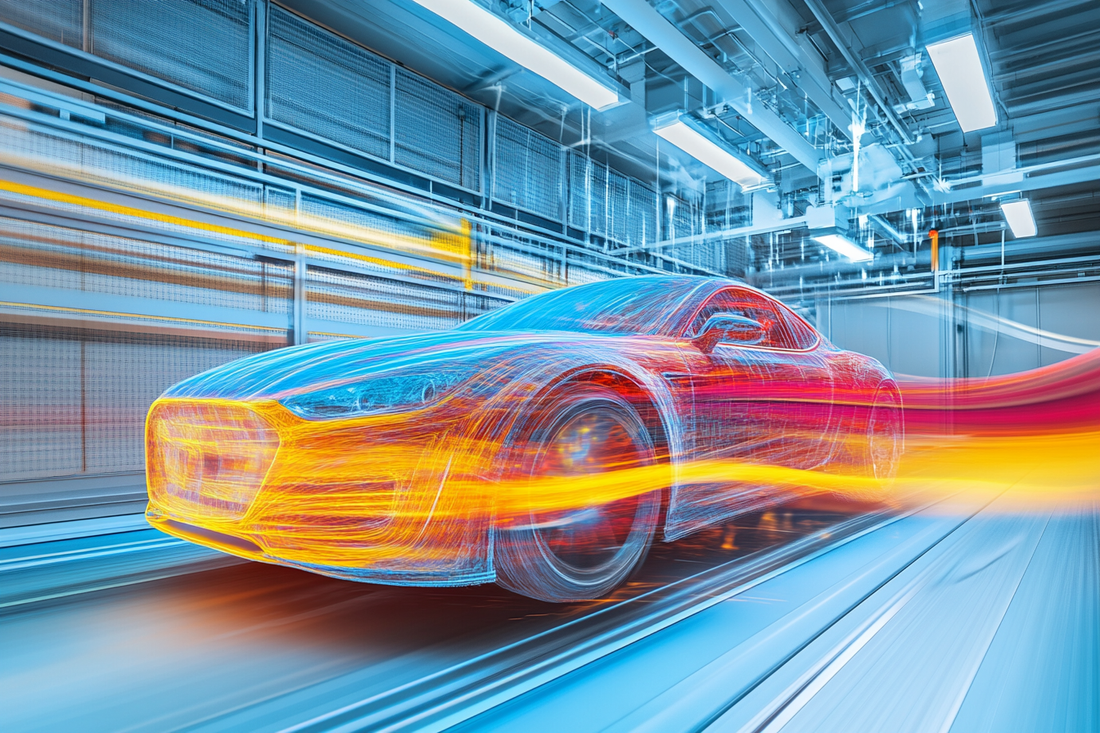Introduction: The Power of Airflow in Automotive Engineering
When it comes to automotive design, aerodynamics plays a crucial role in shaping how a vehicle moves through the air. Whether it's a high-performance sports car, a fuel-efficient sedan, or a cutting-edge Formula 1 racer, the way air flows around a car affects its speed, stability, fuel efficiency, and handling.
The importance of aerodynamics goes beyond just making cars look sleek; it directly impacts fuel consumption, tire wear, and even safety. A poorly designed car can experience excessive drag, forcing the engine to work harder and consume more fuel. On the other hand, well-optimized aerodynamics can make a car more stable at high speeds, reducing the risk of lift-off or instability when cornering.
For decades, aerodynamics engineers have been at the forefront of refining vehicle designs to reduce drag, enhance downforce, and maximize efficiency. The advent of computational fluid dynamics (CFD) and wind tunnel testing has allowed for more precise optimization than ever before. But what exactly is aerodynamics, and how does it shape the modern automobile? Let’s dive in.
Understanding the Basics of Aerodynamics
What is Aerodynamics?
At its core, aerodynamics is the study of how air interacts with solid objects in motion. In automotive engineering, this means analyzing how air flows over, under, and around a vehicle to determine its impact on performance, efficiency, and stability.
Key aerodynamic forces include:
- Drag – The resistance a vehicle encounters as it moves through the air. Lower drag means higher efficiency.
- Lift – The force that can cause a car to lose grip at high speeds. Reducing lift improves stability.
- Downforce – The downward pressure generated by airflow, which increases traction and handling performance.
- Turbulence – The chaotic air movement that creates additional drag and instability. Smooth airflow reduces turbulence and improves aerodynamics.
The Role of an Aerodynamics Engineer
A car aerodynamics engineer specializes in designing and testing vehicles to ensure optimal airflow. They use advanced tools like wind tunnels, CFD simulations, and real-world testing to refine a vehicle’s shape. For example, researchers at NASA apply similar aerodynamic principles in automotive design as they do in aircraft engineering, showing just how crucial airflow management is to vehicle performance.
How Aerodynamics Shapes Car Design
Key Aerodynamic Features in Modern Cars
To enhance performance, aerodynamics engineers incorporate various design elements that optimize airflow. Some of the most common features include:
1. Streamlined Body Shapes
A car’s body shape is one of the most significant factors in determining its aerodynamic efficiency. Modern electric vehicles (EVs), such as the Tesla Model S and Lucid Air, feature ultra-low drag coefficients to maximize energy efficiency. These designs prioritize smooth curves and minimal air resistance, helping the car glide effortlessly through the air.
2. Spoilers & Wings
High-performance vehicles, particularly in motorsports, often use spoilers and wings to manipulate airflow. A rear spoiler disrupts turbulent air, reducing lift and improving grip. This concept is especially vital in Formula 1, where ground effect aerodynamics plays a crucial role in keeping cars stable at incredible speeds.
3. Air Dams & Splitters
Located at the front of the vehicle, air dams and splitters help direct airflow around the car rather than underneath it. By preventing excessive air from entering under the car, these elements help maintain stability and downforce, which is essential for high-speed handling.
4. Ground Effect Aerodynamics
The concept of ground effect aerodynamics originated in Formula 1 and has since influenced the design of many supercars. By utilizing a combination of venturi tunnels and aerodynamic diffusers, cars can generate significant downforce without adding excessive drag. This principle is evident in hypercars like the McLaren P1, where the car’s underside plays a crucial role in creating suction that keeps it planted to the road.
5. Active Aerodynamics
Some modern sports cars feature active aerodynamic components, such as adjustable spoilers and air vents that adapt to driving conditions. For example, the Bugatti Chiron utilizes an active rear wing that adjusts its angle based on speed and braking, enhancing stability and efficiency. This technology demonstrates how aerodynamics is no longer just about fixed designs but rather adaptive performance engineering.
How Aerodynamics Improves Performance
The impact of aerodynamics isn’t limited to racing cars—it affects everyday vehicles as well. Some key benefits include:
✅ Increased Fuel Efficiency – Cars with lower drag require less energy to move forward, reducing fuel consumption. According to a Car Throttle study, a reduction in aerodynamic drag can improve fuel efficiency by up to 10%.
✅ Better Handling & Stability – At high speeds, aerodynamic elements like diffusers and spoilers keep the car stable, preventing lift and improving control.
✅ Higher Top Speeds – Supercars and hypercars are designed with low-drag aerodynamic bodies to reduce wind resistance and maximize velocity.
✅ Reduced Noise & Vibration – Vehicles with optimized aerodynamics experience less wind noise, leading to a quieter, more comfortable ride.

The Future of Automotive Aerodynamics
As technology advances, we are seeing a new era of aerodynamics-driven vehicle design. Some upcoming trends include:
- AI-optimized aerodynamics – Using machine learning to automatically adjust a car’s airflow management.
- 3D-printed aerodynamic components – Enhancing efficiency with ultra-lightweight, precision-designed body parts.
- Increased use of ground effect technology – Bringing Formula 1-style aerodynamics to street cars for enhanced handling.
With automakers continuing to innovate, the role of aerodynamics in electric and autonomous vehicles will be more critical than ever. By integrating aerodynamic advancements, manufacturers can create cars that are faster, more efficient, and more sustainable.
Crowned Cotton Design: Engineering Meets Style
At Crowned Cotton Design, we embrace the spirit of engineering, speed, and performance—principles that define automotive aerodynamics. Just as engineers meticulously refine airflow for efficiency, we craft apparel that reflects the precision and passion of motorsports and engineering.
If you're a fan of motorsports, engineering, or high-performance design, check out our latest collection that embodies the art of speed and efficiency.
Explore more at Crowned Cotton Design.
Conclusion
Aerodynamics is a cornerstone of automotive engineering, influencing everything from fuel efficiency to high-speed stability. Whether in the form of ground effect aerodynamics in racing or streamlined bodies in EVs, the science of airflow continues to shape the future of mobility.
Understanding aerodynamics meaning and how aerodynamics for cars influences vehicle performance provides insight into the fascinating world of automotive innovation. As car manufacturers push the limits of engineering and efficiency, one thing remains clear: aerodynamics will always be at the heart of speed and performance.











